
BioGeoChemistry of Tidal Flats
Pore gradients below oxidized and reduced surfaces of intertidal sands
Organic matter is mineralized in marine sediments by microbial activity using predominantly oxygen, sulfate, and Fe(III) and Mn(IV) (oxyhydr)oxides as electron acceptors. In intertidal surface sediments, the development of steep compositional and physico-chemical gradients is a common phenomenon. Typically oxygen is consumed rapidly within the upper few mm of marine sediments. In permeable sediments, however, oxygenated bottom waters may flow through the upper part of the surface sediments leading to enhanced participation of oxygen in element cycling. Additionally, black reduced surface sediments, so-called ‘black spots’ or ‘anoxic seeps’, are locally formed, indicating a disturbance in the balance of the biogeochemical processes.
In the present study, the pore water composition below oxic and anoxic surfaces of intertidal sandy sediments is investigated using a number of different techniques. Pore waters are sampled down to 40 cmbsf (cm below surface) using pore lances, diffusion samplers, centrifugation of sediment core sections, and lander-based microsensors. Water samples are analyzed for microbial sulfate reduction rates, salinity, dissolved O2, pH, SO42-,H2S, Cl-,Fe2+, Mn2+, TA, PO43-, NO3-, NH4+,H4SiO4, Ca2+, and δ13C(DIC). CH4 is analyzed in collaboration by TP8. Additionally, sediments are investigated for the geochemical composition of a number of sedimentary components. Analytical methods include 35S-radio tracer incubation (whole core incubation method), ion chromatography, ion-selective electrodes, spectral photometry, titration methods, and isotope ratio monitoring mass spectrometry (C-irmMS).
Results are discussed in terms of microbial, geochemical, and hydrodynamic processes. The intertidal surface sediment with both oxic and anoxic surfaces is characterized by high microbial sulfate reduction rates exhibiting maxima between about 5 and 15 cm. Rates are higher below reduced sediment surfaces (‚black spots‘), associated with decreased oxygen penetration depths, and proton activities. Anaerobic metabolic activity in pore waters below black spots leads to significantly enhanced concentrations of sulfide, ammonium, DIC, phosphate, silica, and a net consumption of sulfate. The role of anaerobic methane oxidation associated with sulfate reduction as the trigger for enhanced sulfide production below anoxic surfaces is indicated by a strong enrichment of the 12C isotope in dissolved inorganic carbon. They act as windows for reduced substances like sulfide, nutrients and energy into surface waters. Oxidative processes in the sediment can not compensate quantitatively for the enhanced reducing activity below black spots.
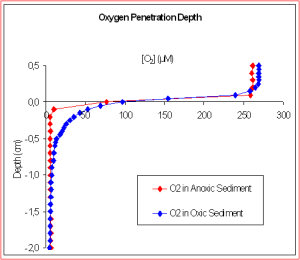 |
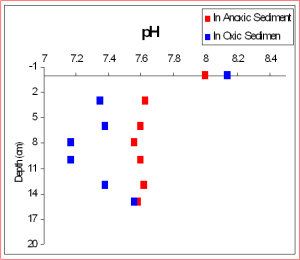 |
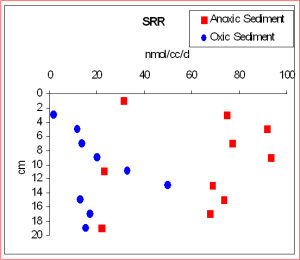 |
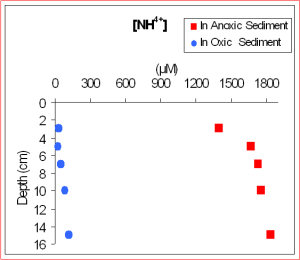 |
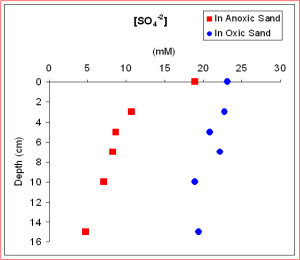 |
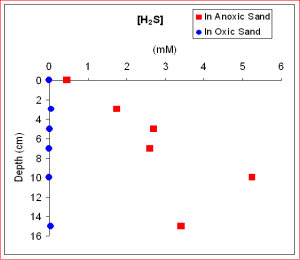 |
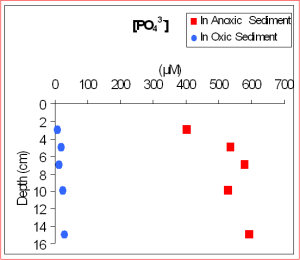 |
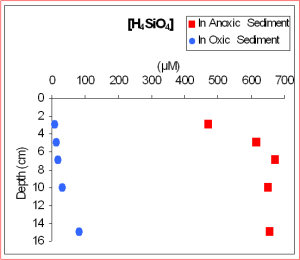 |
| <<back | All publications
|